When cultivating at home, it is necessary to take into account the exactingness of indoor cacti for heat, light and moisture. These plants are completely unsuitable for the same agricultural practices that are used in the care of other floristic specimens. Succulents are more patient and in many cases less fussy. But without knowing how to care for cacti at home, it is very easy to kill succulents.
When to wake up cacti after wintering and how much to water them
The cold has passed, it’s time to wake up the cacti after wintering – how to do it right? In the conditions of central Russia, the growing season for cacti usually begins in March, when the sun begins to peek through the windows more often. During the day, the temperature at the window where the collection stands rises rapidly, significantly exceeding the twenty-degree mark. This means that the wintering is over and a troublesome time begins for the cactus grower.
It’s time to transfer cacti to summer content. The process of transferring a cactus after wintering should be gradual and long enough. First of all, it is necessary to carefully examine the entire collection and find out if there are any very wilted and diseased plants. They need to be dealt with separately and in the first place.
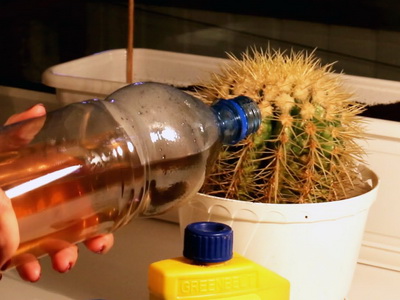
Strongly withered cacti are immediately transferred to a warm, bright place and, when they warm up, they are carefully watered. It is better to warm completely unreliable specimens in hot water and, after drying as usual, transplant them into fresh soil. It is not bad to put such plants in a greenhouse or place in a plastic bag. When the plants begin to grow, the first watering is carried out. Spring preventive spraying of the entire collection with preparations for ticks and other pests, as well as fungicides for fungal diseases, will not be superfluous.
How to wake up a cactus after wintering? To bring the collection out of dormancy, at first it is only sprayed in the morning and evening. On cloudy days, if the temperature on the window is low, it is better not to spray. Spraying usually takes up to two weeks. Don’t be in a hurry to water. It is still not warm enough on the window at this time, especially at night. In addition, in March, and even in April, weather surprises are possible, and watered plants will end up in wet cold soil for a long time. Especially big trouble delivers a strong cold wind in the windows, carrying away the heat. We should also not forget about the upcoming and, possibly, early shutdown of central heating, which dramatically changes the microclimate of the apartment. The problem is removed if the cactus owner has the opportunity to heat the collection on the windowsill.
The era of perfectly atomizing water spray guns with rubber pears, which have served cactus lovers for a long time, is a thing of the past. For spraying window collections, a conventional plastic sprayer screwed onto a plastic bottle of an acceptable size is convenient.
Especially good are expensive sprayers, usually sold complete with a bottle. They spray water very finely when the lever moves in both directions. It is desirable that with any sprayer the water is sprayed as finely as possible. It is better to spray a torch of water dust over the cacti so that it falls freely on the plants from above and evenly moistens the stems and spines.

Spray water should contain a minimum of mineral salts. Ideally, this is distilled or pure rain water, but boiled or filtered water in a household filter (preferably with a softening component) is also quite suitable. It will be easier to spray if hot water is poured into the spray container. Sprayed water falls on cacti already cooled to room temperature.
Read on to learn when to start watering cacti after wintering and how much water they need.
Proper watering of indoor cacti when leaving in the summer
A sign of the readiness of cacti for the first watering when leaving at home is the appearance of young thorns on the tops and the poured stems of plants. Different genera and species of cacti come out of dormancy at different times. Rebutia, for example, often have buds already at the beginning of spraying. Spraying causes them to quickly pour the stem, bud growth and flowering.
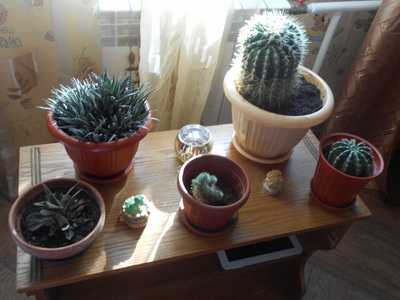
The reaction of plants to spraying also depends on how successful the wintering was for them, therefore, when spraying, and especially after the first watering, it is necessary to carefully monitor the plants and identify unsuccessful specimens in time. It happens that some cacti, despite prolonged spraying and a satisfactory external condition, do not want to pour. They, however, should be watered along with the entire collection. After watering, such cacti most often draw water and begin to grow. If this does not happen, the plants must be shaken out of the pots, the roots inspected and appropriate measures taken. The first watering is carried out on warm sunny days in the morning. Regular watering is started when stable warm weather is established, which allows maintaining the optimum temperature on the window.
To prevent root rot during the first proper watering of cacti, it will not be superfluous to add a fungicide to the water that inhibits the development of soil fungi. You can use ordinary potassium permanganate of light pink color. Of the other fungicides, TMTD, a wettable white powder, gives good results when caring for cacti in the summer. 2 g of powder is diluted in 1 liter of water. You can also experiment with modern drugs. Water for irrigation should be at room temperature or slightly higher. The first watering is done small, not until the moisture capacity of the soil is completely saturated.
The intensity of watering cacti when caring for at home
The intensity of watering cacti in the summer during the growing season is determined mainly by air temperature and the need of plants for water. It is impossible to give a single watering recipe – this is a kind of art. With insufficient watering, the soil dries out ahead of time; when overflowing, the nutrients necessary for plant growth leave the soil. Even with extensive experience in breeding cacti, mistakes cannot be avoided, if only because in pots of different sizes the soil dries out at different times. When the collection is oriented south during the summer months, at high day and night temperatures, one watering per week is usually sufficient until the full capacity of the soil is used. But this is only a general guide, and in each case, specific conditions must be taken into account. At the end of summer and autumn, watering is gradually reduced and completely stopped at night temperatures below 15 °. There are genera and species that require constant moderate watering throughout the season. These, in particular, include Ariocarpus and Roseocactus, Leuchtenbergia, Islayi, Bartshell, Obregonia, Echinomastus, Neogomesia, etc. In any case, by the next watering, the soil in the pots should dry out, but not be overdried. It is convenient to check the condition of the soil in pots with a piece of rusty steel wire with a diameter of about 1.5 mm. The wire is carefully stuck to the drainage near the wall of the pot. Damp soil leaves wet footprints and small lumps of earth on it.
It is convenient to water the collection, especially if it is large, from a small watering can. With the ability to solder, such a watering can is easy to make from a tin can of a suitable size. You can buy a ready-made small plastic watering can for watering when caring for cacti. So that when watering the water does not overwhelm the pots, the size of the outlet at the watering can should be small. If the watering can is metal, it will not be superfluous to put a piece of rubber or polychlorinated vinyl tube on the end of the stigma. This will protect the cacti from possible injury from sharp edges. Ordinary tap water is suitable for irrigation, but not from a well and settled. Obviously, water from wells, enriched with salts of calcium and other elements, is not suitable.
In addition to watering in warm weather, regular spraying of the collection is carried out. In the summer sprayed 1-2 times a day in the morning and evening hours. It is undesirable to spray in full sun, water drops on the stems can act as small lenses and cause burns. In addition, water at this time evaporates quickly, without giving the desired effect. The water for spraying must always be soft, otherwise the salts of hard water will settle on the stems, especially in species with small white spines, and spoil their appearance.
Demanding indoor cactus to heat, light and moisture
Cactus growing guides often recommend spring shading from the sun to protect plant stems that have lost water over the winter from sunburn. There is some sense in this. However, shading is usually required for a small proportion of cultivated species.
With regular spraying, most cacti do not need such protection. For some hymnocalyciums, Chileans, parodies (Parodia formoza) and a number of other representatives of various genera, shading is still necessary. However, it is also necessary for them in summer, without this, the stems of plants in the open sun will have a permanent purple color, which is a protective reaction.
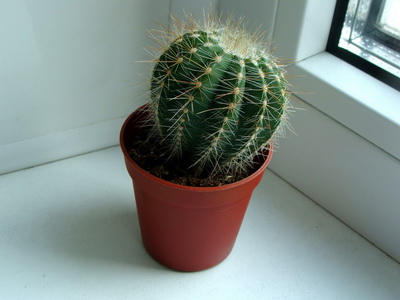
Considering the exactingness of indoor cacti for heat, light and moisture, it will not be superfluous to shade for difficult-to-grow and capricious species (ariocarpus, roseocactus), especially if they grow on their own roots. Synthetic tracing paper is very convenient for shading. It adheres easily and securely to glass using pieces of PVC adhesive tape.
You can also use plain white paper. It should be noted that there is a group of early-flowering cacti (rebutia, some echinopsis, echinocereus, notocactus, chamocereus, etc.), early and abundant watering of which sometimes leads to the cessation of budding, the drying out of some of the buds and their degeneration into lateral shoots.
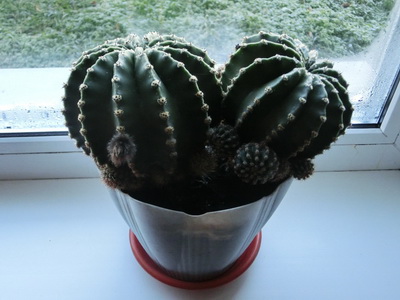
If the condition of such species after wintering is satisfactory, then you just need to increase the spraying period and limit yourself to a slight moistening of the earthen coma until the flowering of plants reaches its apogee.
What are the features of caring for cacti in spring
April is the time of mass flowering of cacti. In spring, rebutias, ailosters, parodies, hymnocalyciums, mammillarias, and representatives of other genera bloom. At this time, the collection is very decorated with light and abundant flowering species. This should not be forgotten in the pursuit of rarities. In a large multi-species collection, cacti bloom until late autumn. Some species give several generations of flowers per season. Chileans usually bloom last. So, neoporteria often bloom in November, already set for the winter. This corresponds to the flowering time of cacti at home. The flowers of these pretty cacti (Neoporteria gerocephala, N. nidus, etc.) bloom on sunny days when the temperature rises on the windowsill.
What are the features of caring for cacti in the spring? The temperature is a decisive factor for the opening of ready-to-flower buds. The necessary turgor of flower cells is created only with a sufficient amount of water evaporated by them. Large buds that appeared on a cactus in late autumn and do not want to bloom even on sunny days can open completely if the plant is placed under a low-lying electric lamp. This technique can be used to photograph late flowering species.
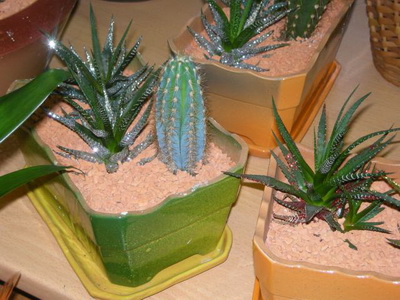
In late May – early June, depending on the weather, a collection of cacti is exposed to fresh air: on a balcony, loggia or window ledge. The last option for many city dwellers is obviously the most acceptable. It is generally believed that the southeast side is optimal for cacti. This is not entirely true. One of the features of cacti care is the southern orientation and maximum sun. In such conditions, with proper care, it is easier to maintain the correct shape of the stems characteristic of plants. Of course, with the appropriate selection of species, good results can be achieved in almost any orientation of the collection. In any case, the arrangement of the collection in the air, it is necessary to protect it from rain and dust. The best material for this is polyethylene film. Unlike glass, it transmits more ultraviolet rays, which brings the conditions of keeping cacti closer to the natural environment. At the same time, the stems and spines of plants look more powerful and more beautiful than under glass.
The photo of caring for cacti at home shows how to properly water succulents:

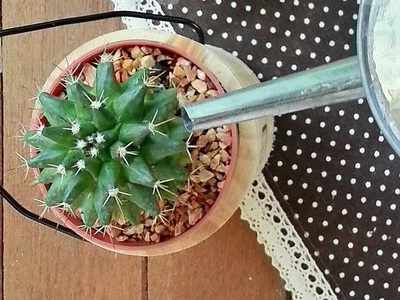

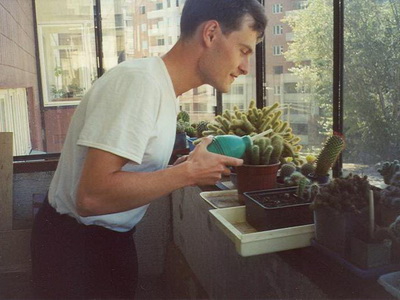
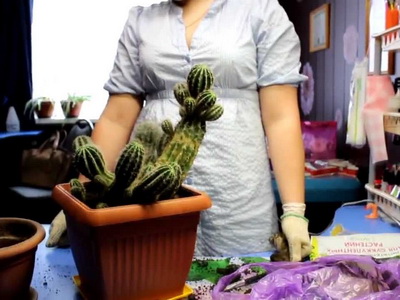
Growing and caring for cacti: where to keep flowers
The best option for keeping cacti in the summer is a reliable and durable window shelf design. The shelf is knocked together from boards 20-25 mm thick. Stretch marks made of steel wire about 4 mm thick are attached to the sides of the shelf through metal eyes. The eyelets themselves are securely attached to the shelf using nails, screws or bolts.
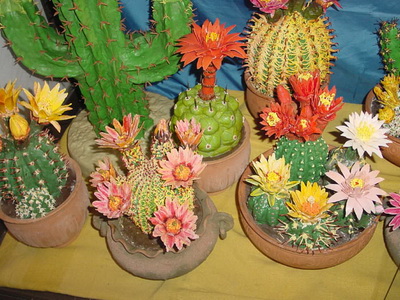
On the side of the shelf facing the window, two or three more steel lugs are attached to attach to the window frame. Two more lugs are attached to the sidewalls of the window frame. The free ends of the stretch marks cling to them. To fix the shelf on the bottom of the window frame, it is necessary to drill holes in it and tightly hammer metal bushings with internal threads. The lugs of the shelf are attached to the bushings with the appropriate bolts. Everything must be done firmly and reliably, since the weight of a large shelf with cacti is very impressive.
The frame for the polyethylene coating on the shelf is made permanent or removable and foldable. In the latter case, there will be fewer problems with storing the shelf in winter. Steel wire with a diameter of about 4 mm is suitable for the frame. After manufacturing, the frame is tightly wrapped with PVC electrical tape, in one layer.
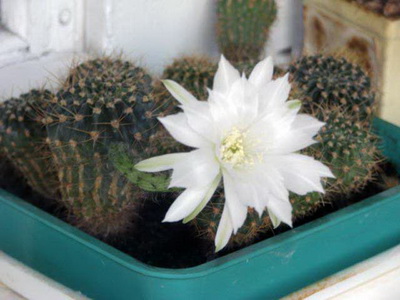
Insulating tape will protect the wire from rust, and polyethylene from excessive abrasion and overheating on the metal. It is better to make the width of the shelf slightly larger than the width of the window sill. There will be less difficulty with the arrangement of cacti. The polyethylene coating is attached to the ends of the shelf using small nails, with linings for caps. A folding curtain is made from the side of the room. The proposed design, once made and adjusted in place, will save you from unnecessary trouble for a long time.
The disadvantage of window shelves for caring for cacti at home is their small volume and, as a result, excessively high temperature and dry air. In such conditions, with insufficient watering, cacti can get sunburned, so the amount of film coating should be as large and ventilated as possible.
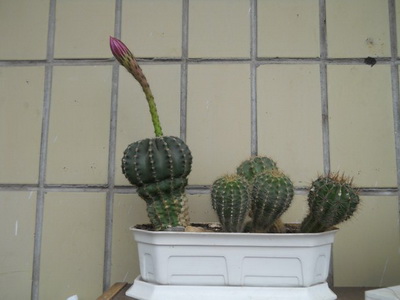
The rear curtain of the shelf usually remains permanently open in the summer. It is possible that you will have to make additional windows in the side walls. Speaking about the temperature regime for cacti, it is appropriate to recall that E. and B. Lems, who have extensive experience in greenhouse cultivation of succulents, consider the temperature above 38 ° C to be optimal for cacti. But this is in the greenhouse, on the windowsills, such a high temperature is hardly acceptable. Jan van der Neer (2004) recommends a much more modest temperature range close to room temperature for most species.
Another technical aspect of caring for cactus flowers is the selection of dishes for planting. Usually, plastic pots of different sizes are used for planting cacti, depending on the size of the plant. For home collections, the square section of the pot is optimal, it allows you to fully use the allotted area.
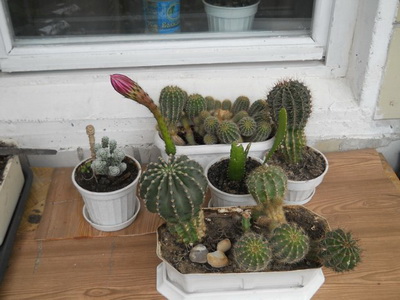
The plastic of the pots must be sufficiently inert, that is, it must not release harmful substances into the soil. Commercial pots most often have a width to height ratio close to 1:1. For many cacti, this ratio is very inconvenient, as the root system is too large compared to the pot. Trimming roots is not always desirable, and taproots simply cannot be trimmed. The most suitable ratio of the width of the pot to its height is obviously a ratio close to 1:1.5. In addition, it should be somewhat truncated downwards. From truncated pots, it is easier to shake out plants when transplanting.
One can hardly agree with V.D. Lobko, who proposes to plant cacti in narrow and tall pots, the size of which in cross section is much smaller than the stem of the plant. When growing and caring for cacti in such dishes, plants are easy to fill, and transplanting cacti at home will turn into flour: try pouring soil into a pot covered with a cactus.

It is much better for the cactus and its owner if there is free space around the stem to the edge of the pot for stem growth and easy watering. In any case, the determining criterion for choosing the size of dishes for transplantation is the size of the root system of the plant.
Pots with cacti are conveniently placed in groups on special pallets. Trays not only collect excess water when watering, but also make it easy to move plants around. Given that the legs of the pots are usually made small, when watering it is important that the water flowing into the pans does not close with the bottoms of the pots and does not lead to stagnant soil moisture. This can be avoided in two ways: increase the height of the legs of the pots or put a metal grate with the legs bent down into the pan. In the latter case, galvanized welded metal mesh for hedges is very convenient for the manufacture of the lattice. When installing the grate, there is no need to drain or suck water from the trays in case of overflow.
What conditions are needed for a cactus in summer
The summer period is most interesting for the cactus grower. With proper and careful care, cacti delight their owner with good growth, powerful beautiful spines and abundant flowering. At this time, overdrying of the earthy clod in pots is undesirable, it adversely affects the growth of cacti, and in combination with high temperature and dry air, it can lead to reddening of the epidermis in some types of cacti and even burns.
Cacti with a reddened epidermis slow down growth, so they are shaded or even removed from direct sun and regularly sprayed with water. Knowing what conditions are needed for cacti, a regular close inspection of the collection in the summer will allow timely identification of plants that have stopped growing or are affected by diseases and pests. For an experienced cactus grower, a quick glance is enough to notice any deviations from the norm. Plants that are in doubt should be dealt with immediately, otherwise they can be lost. Among the losses may be valuable, difficult to grow species.
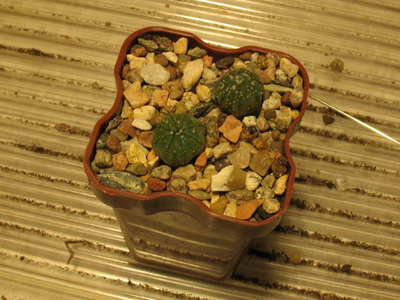
In the middle lane, summer is rather short, and already at the end of August it is desirable to monitor daytime and especially nighttime temperatures. Watering at this time is done less often and less plentifully. In favorable weather, many species still bloom, but the growth of plants is already ending, and the collection should be gradually prepared for wintering. In September, daily temperatures drop even more, respectively, reduce or stop watering, spending it only on warm favorable days. At this time and later, you should not spray cacti, since in some species spraying stimulates growth, and with a lack of light and heat, the stems will certainly be damaged.
When caring for indoor cacti in the air, the collection is kept as long as possible until night temperatures begin to drop to 8-10 °. Of course, the soil in the pots should be dry by this time. Depending on the weather, the outdoor collection can last until the end of September and even the beginning of October. If it is possible to heat the greenhouse, the period of stay can be extended. When all the possibilities of keeping the collection on the street have been exhausted, it is brought into the house and continues to be prepared for wintering.
Transplant when caring for cacti at home
The growing season is also the time to transplant cacti when caring for at home. Depending on the composition of the soil, the frequency of transplanting cacti has a different duration. It is highly undesirable to bring the soil to complete depletion. Plants will not only grow poorly, but also give ugly growths.
In depleted soil, cacti winter poorly, wither and rot. Plants weakened in this way are more susceptible to various diseases. Transplanting when caring for cacti can be done at almost any time of the year, if necessary. Strange as it may seem, transplanting cacti during the growing season, especially in its first half, is undesirable. Transplantation at this time is easily tolerated by plants, but they usually give a good increase only the next year. Obviously, a lot of time is spent on adapting to new soil and growing roots. It is better to start transplanting at the end of the growing season.
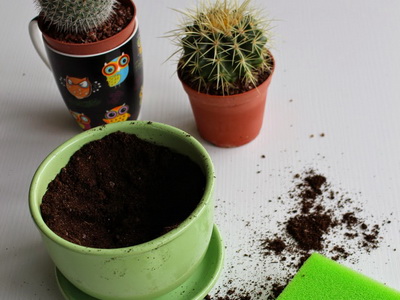
In plants transplanted in late summer – early autumn and later, the current growth has already been completed or is in the process of completion. They tolerate transplantation well and take root, and next season they give a full-fledged growth. In addition, a transplant is possible in early spring. My own experience of transplanting hundreds of plants in the early spring before the growing season (March) has also shown very good results. The transplantation stimulated the awakening of plants, they quickly filled up and started to grow, fully used the growing season. There were no losses among healthy transplanted cacti.
Next, you will learn how to transplant cacti at home.
How to transplant cacti at home
When shaking a cactus out of the pot, in no case should you pull it out by the stem. This threatens to tear off the roots. If the bottom of the pot cannot be removed, the drainage hole must be widened. Then you can push an earth lump out of the pot with tweezers or a stick of a suitable diameter, pressing through the drainage hole on the shard covering it.
If the bottom is removed, the earthen lump is pushed out with its help. You can also turn the cactus upside down and, while holding, tap the edge of the pot on the edge of the table or stool. When working with large and highly thorny plants, wear a mitten or glove on your hand. In a plant shaken out of a pot, the root system is carefully examined.
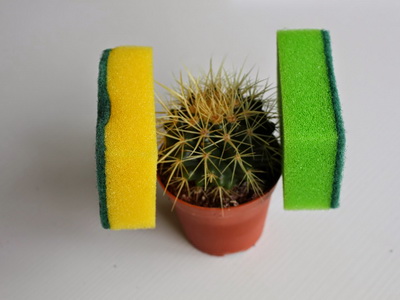
If the roots are poorly developed or rotten, it is heated in water at a temperature of 45-55 ° C for 15-20 minutes, depending on the size of the stem. The upper temperature limit should be used only when necessary, when the disease of the plant has gone too far. The temperature of 50 ° cacti tolerate easily. Warming up not only kills disease-causing organisms, but also stimulates the growth of cacti. This method also gives good results in the case when the plants do not want to start growing.
Fibrous roots, if they are obviously large for a pot, can be trimmed without harming the plant. Most cacti restore their root system well. In species with roots that are difficult to restore (Astrophytum, Melocactus, etc.), this cannot be done. Tap roots are not cut. The wounded areas of the roots should dry out before planting, as various infections can penetrate through them. To do this, cacti before planting in pots should lie down for 3-4 days in a warm, bright place.
Tips for repotting a cactus
If the transplanted cacti do not have obvious damage and no pruning of the roots has been carried out, their root systems can not be dried, but immediately transplanted into fresh soil. You just need to make sure that the soil is in good condition. Transplanted cacti are kept in a warm, bright place, but not in the sun.
This is due to the fact that at first the roots are not able to provide the plant with water. The first watering is carried out about a week after transplantation. Before that, cacti are only sprayed with water. If it is already cool at the end of the season, especially at night, it is better to keep the transplanted cacti warm for two weeks and only then put them outside.
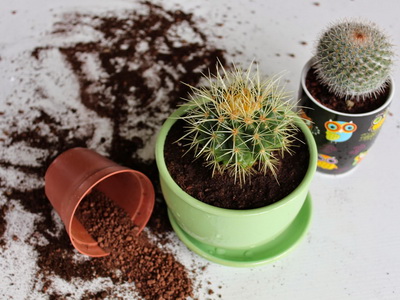
Many cacti require larger pots when repotting. In principle, a large pot is always preferable. The main obstacle to this is the limited area of the window sill allocated for the collection, so a reasonable compromise has to be found. When transplanting, sometimes you have to reckon not only with the size of the roots, but also with the size of the stem. Some species with a large stem have relatively weak and small roots. Large taproots should not rest against the bottom of the pot. This leads to a stop in the growth of the cactus and rotting of the roots. For some species with a large tap root, the pots have to be significantly increased in height.
By following the recommendations on how to properly transplant a cactus, you can easily perform this agricultural technique.
Growing cacti at home: planting and care (with photo)
Before planting, when caring for cacti, used pots are thoroughly washed with hot water. Above the drain hole, a suitable shard is placed in the pot, which ensures the free passage of excess water and air, and a layer of drainage from fine gravel is poured on a level with it.

2-3 cm of soil is poured onto the drainage and cactus roots are lowered onto it. Then the roots from the sides are covered with earth to the top of the pot. With the help of a stick, the soil is lightly compacted around the edges of the pot and, if necessary, more is added. The compacted soil settles heavily when watered.
A small space should remain under the stem, where the drainage is poured flush with the edges of the pot and the bottom of the pot is tapped several times on the table so that its contents settle a little. After that, drainage is added again. The stem of the cactus should be flush with the edges of the pot or slightly lower. In the future, he will settle a little more. It is desirable that there is a gap between the cactus stem and the edge of the pot, sufficient to fill the soil, unhindered watering and growth until the next transplant.
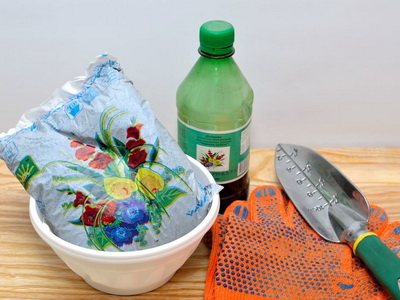
The most successful cactus planting schemes that have proven themselves in practice. According to these schemes, the cactus stem and root neck do not contact directly with the soil, a mineral layer is poured under them. The height of the bedding depends on the root system. With a tap root, it increases and can capture its entire upper part, which does not have small suction roots.
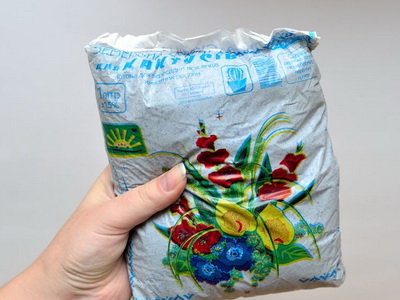
The mineral cushion is well ventilated and prevents moisture stagnation at the root neck, and therefore prevents its decay. In addition, it protects the soil from crusting and direct desiccation by the sun, prevents soil erosion during watering, and improves the appearance of the planted plant.
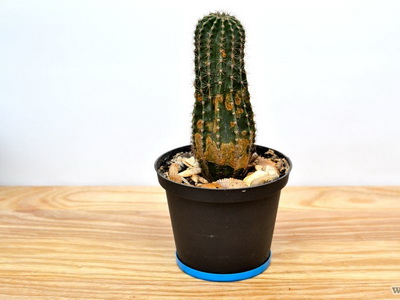
When transplanting, the upper and lower drainage can be saved, which will eliminate additional workpieces. You can also not throw away, but save the mineral part of the spent soil by sifting it through a colander or soil sieve. This occupation will bring less trouble than finding the right material.
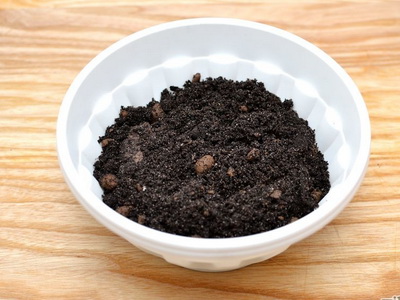
In addition to planting cacti in individual pots, plants can be planted in groups in suitably sized boxes. This makes it possible to create interesting compositions and makes it easier to care for them. For such a planting, it is desirable to select plants that require the same conditions of detention.
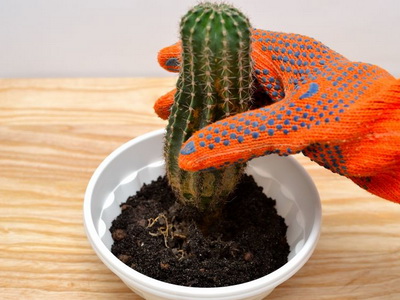
When growing together in a common container, cacti grow better. A large volume of soil stably maintains its physical, chemical and biological characteristics. The disadvantages of group planting are the difficulty of transplanting plants with intertwined root systems, and in the event of a disease of one plant, the entire group will have to be transplanted.
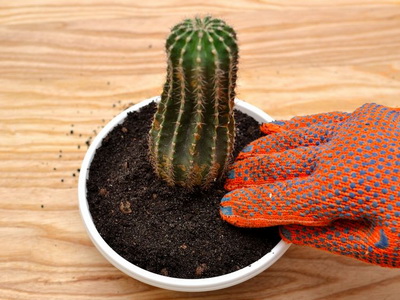
The photo of growing and caring for cacti shows how to plant plants:
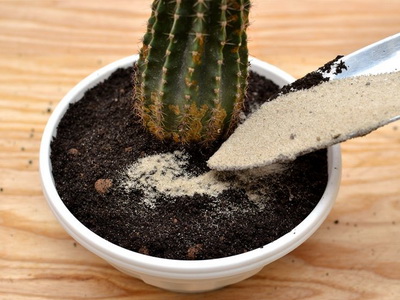
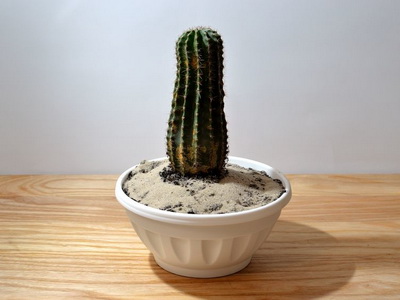
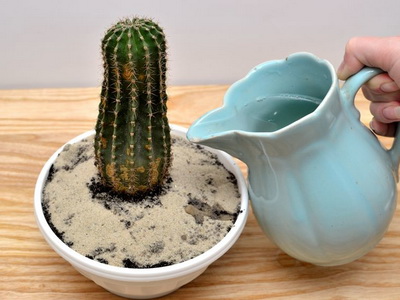
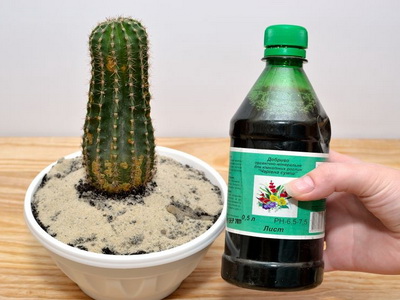
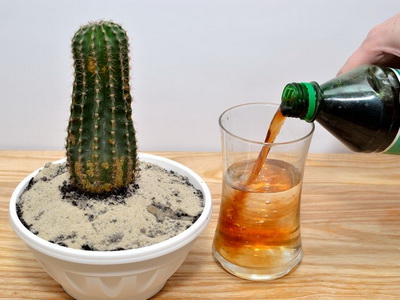
Feeding cacti for home care (with video)
In spring and early summer, additional fertilizing of cacti with fertilizers is possible. Cactus lovers have a very different attitude to fertilizers – from complete denial to the need for application. As already noted, a distinctive feature of cacti is a low need for nitrogen. Based on this, fertilizer mixtures are prepared.
Let us give only the ratio of the three most important elements recommended for fertilizers by the German company Haage: potassium 38%, phosphorus 16%, nitrogen 5.6%. Currently, you can buy ready-made liquid organic fertilizers, the composition of which is selected specifically for cacti (g / liter): nitrogen 2; phosphorus 3; potassium 4; humic substances 2.
Fertilizers must be used carefully. It is not necessary to conduct an experiment on the entire collection at once. The response of plants grown for years in soil of constant composition may not be adequate to your efforts. With a timely transplant, the need for additional fertilizer of cacti usually does not arise.
Watch the video “Caring for cacti at home” to better understand how to grow these succulents:







